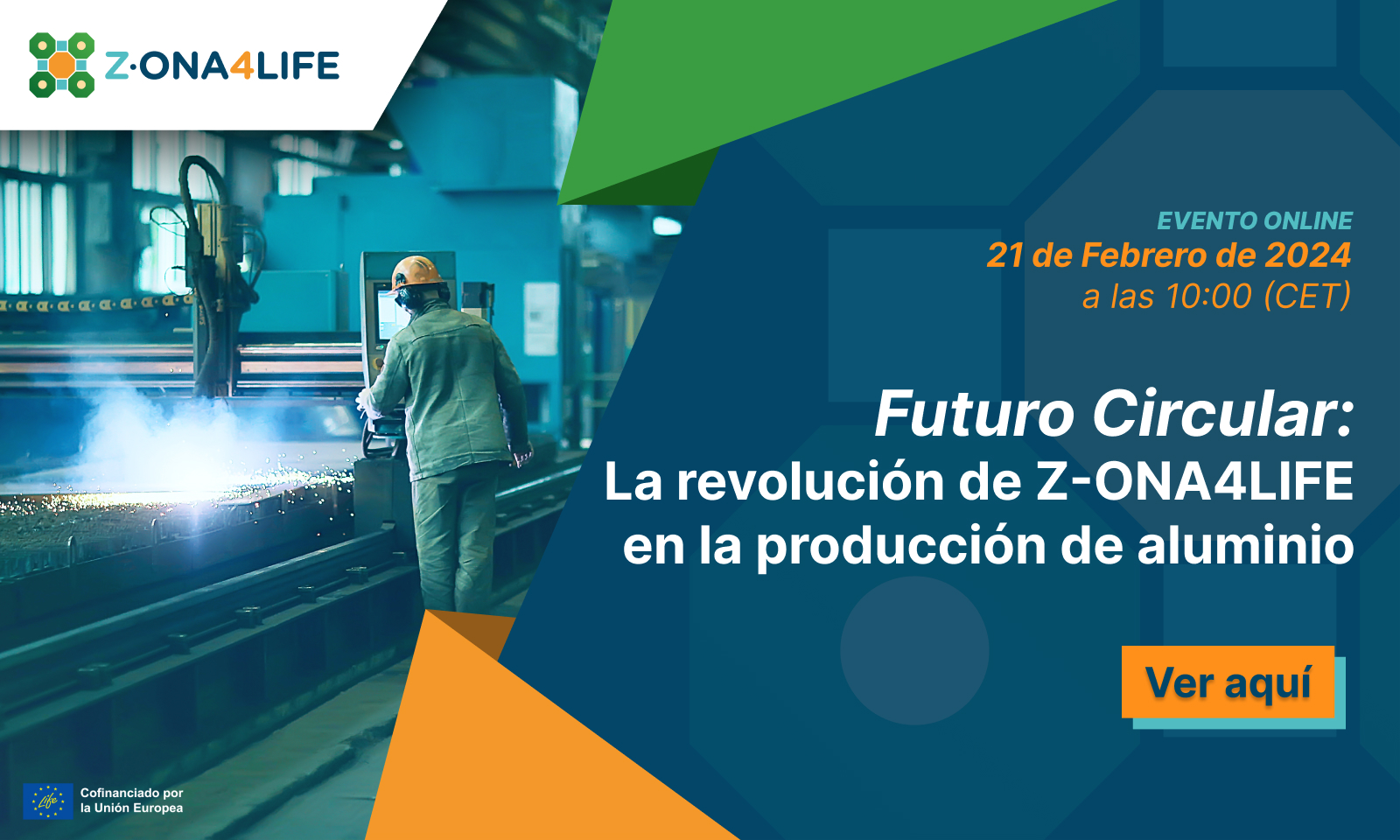
Circularity of aluminium foundries through the production of zeolite for effluent depuration
----------
On February 21, the expert members of the Z-ONA4LIFE project introduced how they are building a circular future for the aluminium industry.
The purpose of the webinar was to explore the comprehensive elements of the Z-ONA4LIFE project, expanding on the technical requirements to achieve success, and the responsibilities of partners involved in this transformational development. Z-ONA4LIFE emerges in an era where waste reduction, resource optimisation, and regenerative practices are required to respond to ambitious European and global sustainability goals. The European Green Deal, the Circular Economy Action Plan, the EU Industrial Strategy, the Sustainable Development Goals are among the policy developments that have reinforced the acceleration of a zero-waste economy and the evolution of sustainable best practices.
The 1st Z-ONA4LIFE webinar was a collaborative discussion between the project’s coordinating partners and experts to demonstrate the strategic vision that is going to empower a more circular aluminium industry and accelerate a sustainable Europe.
LIFE Programme: Objectives & Strategic Plan
José Manuel Blanso, MITECO (The Ministry for the Ecological Transition and the Demographic Challenge), started the webinar highlighting the role of the LIFE Programme in the financing and coordination of the Z-ONA4LIFE initiative. He reinforced the need to address resource waste. Furthermore, Jose Manuel referenced how the objectives of the Z-ONA4LIFE initiative are innovative in the sense that they not only address the growing problem of waste through elimination, but also by transforming aluminium and giving it a new life in the form of zeolites.
Advancing the circularity of aluminium foundries
Aurora López Delgado, Scientific Investigator at CSIC and Z-ONA4LIFE Project Coordinator, transitioned the discussion to provide an overview of the aluminium industry and examined the technical aspects of the pilot program. Aurora highlighted the high demand of aluminium across industries, from transport to construction to renewable energy, as a result of the dynamic composition of the metal.
Aurora stressed the importance of this project, disclosing how salt slag is a hazardous waste according to the European Waste Catalogue and therefore needs to be managed as such. She explained how the development of this pilot plant can transform salt slag into a product of value through a technological and environmentally viable process that will contribute to the circularity of aluminium.
Aurora also focused on the contribution of Z-ONA4LIFE to the environmental strategy and vision of Europe, possessing the capacity to have an integrated impact across borders, industries, and policies. The efficacy of this project’s solutions depends on each consortium member’s ability to harness their expertise and complement one another.
Transformating salt slag into a zero-waste product
Maximina Romero, Scientific Investigator at CSIS, dedicated her time to expand on the scientific elements of the process of transformation of Z-ONA4LIFE, clarifying the dangers of salt slag, and the steps necessary to generate zeolites. She described how, if salt slag is not managed properly, it can have grave consequences on the environment and on living beings in general.
Furthermore, Maximina highlighted that the Z-ONA4LIFE cycle to zeolite production revolves around a process of hydrothermal synthesis, and at this point additional experimental research needs to be administered to determine the optimal conditions for synthesis. These experiments will analyse the influence of operational parameters like temperature and pressure, to establish the ideal conditions for transformation. To ensure the sustainability of the process, other wastes with a high percentage of silicon will be used to complement the composition of the salt slag.
Z-ONA4LIFE has been designed to close the loop between waste generation, how waste is treated and managed, with the goal of developing value-added materials, such as zeolites.
Z-ONA4LIFE: The Installation and Beyond
The conversation about the synthesis process was continued by Manuel Revuelta Bayod, Quality, Environmental and Health Safety System Manager FERROSADIM. He explored the five year timeline that it will take to develop the amount of zeolites to align with the goals of the project.
Teresa Miñambres, Plant Director, ALUSIGMA, concluded the webinar by demonstrating the role that the project can play in establishing Europe as a leader in circularity, exploring new paths for a secondary aluminium industry. She focused on the location and construction of the ALUSIGMA pilot plan in Gijon, the details of production, and amplified the specific functions that will be included to develop usable zeolites. Finally, she reiterated the high demand of aluminium, the process of zeolite generation, the market and uses of zeolites, while at the same time highlighting the importance of replicating this knowledge across Europe and beyond in the future.
—-------------
Follow our social channels and subscribe to our newsletter in order to receive Z-ONA4LIFE updates and alerts about future events and webinars!